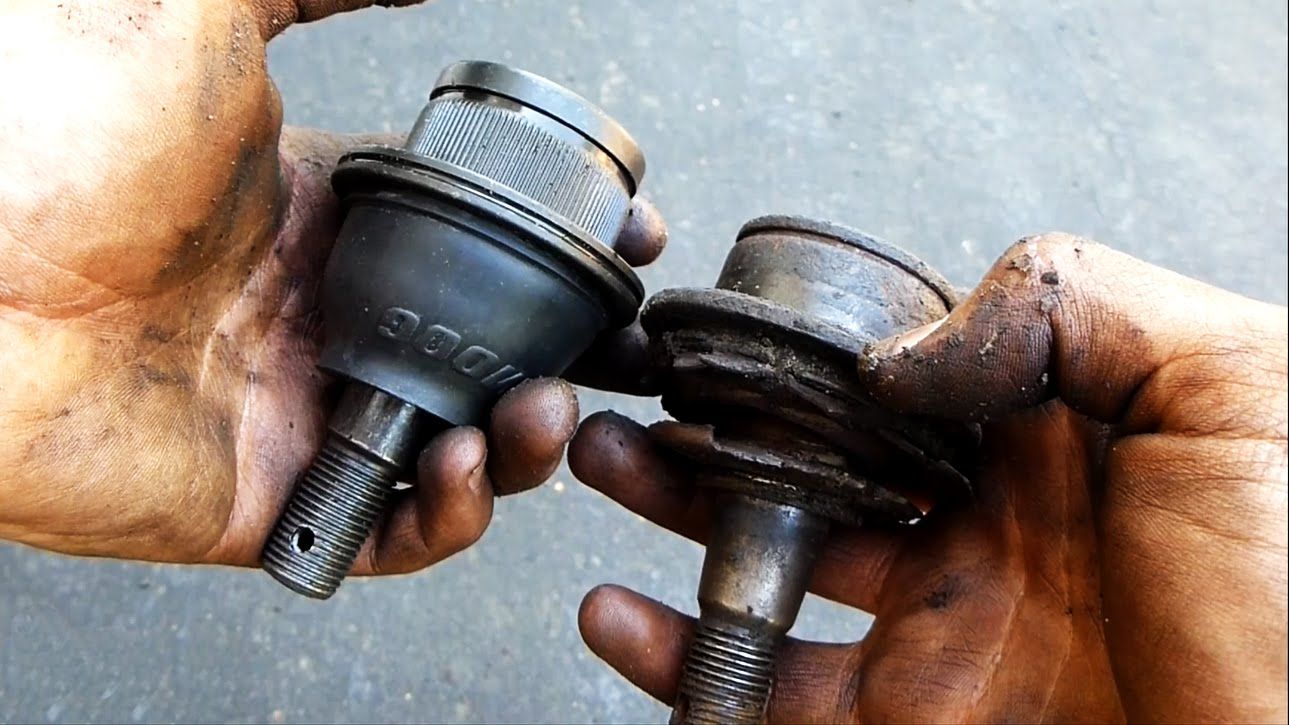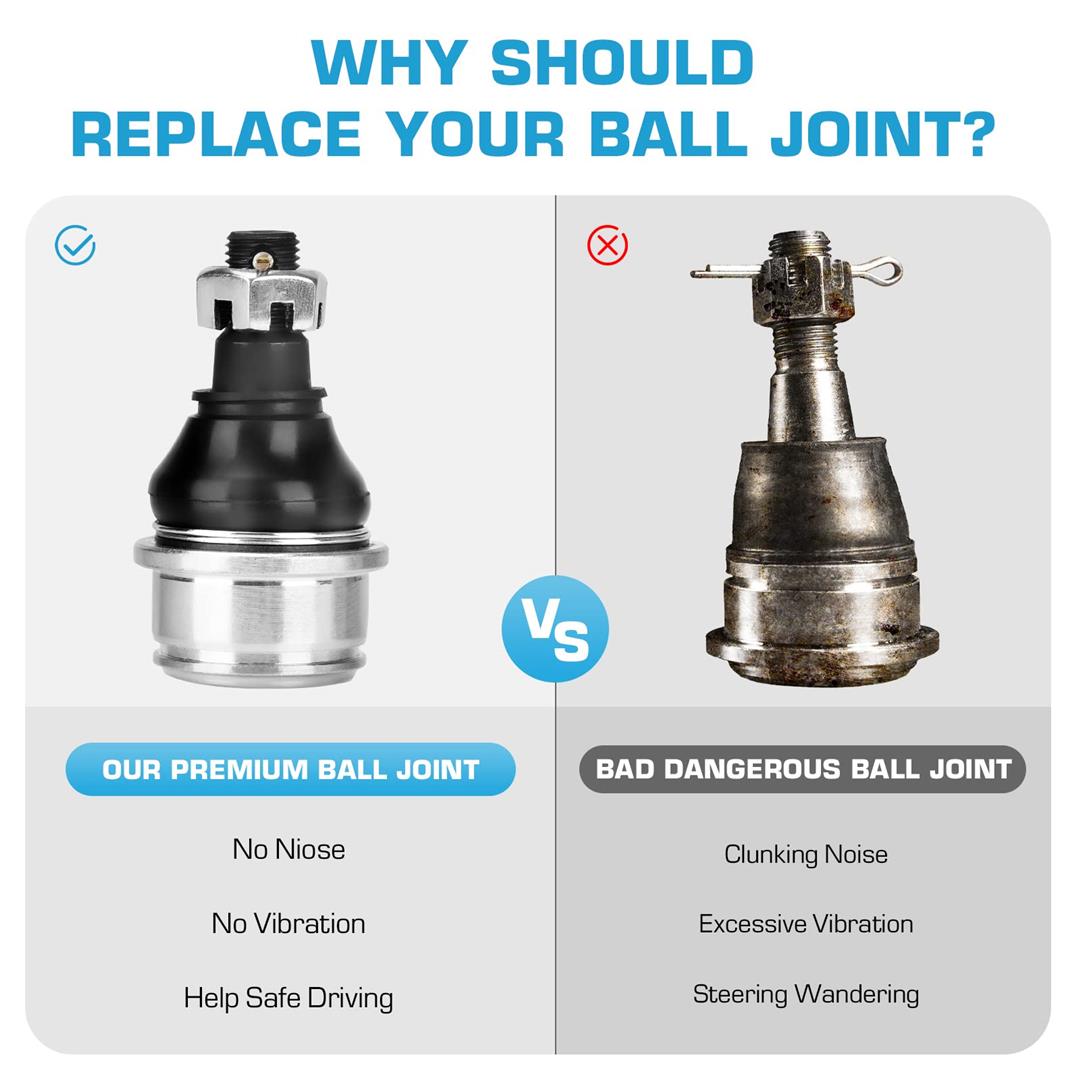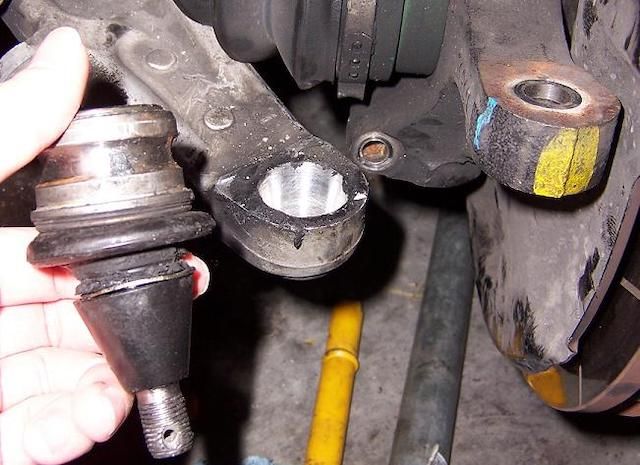Whether you are a seasoned car enthusiast or simply a driver concerned with vehicle maintenance, understanding the importance of ball joints is crucial. Ball joints play a vital role in the suspension system of your vehicle, enabling smooth and controlled movement of the wheels. These small but mighty components bear the weight of the vehicle, allowing for steering and absorbing bumps and road irregularities. However, like any other part, ball joints can wear out over time, leading to potential safety hazards and compromised performance.

What are ball joints?
Ball joints are like the unsung heroes of your vehicle's suspension system. These small but mighty components connect the control arm to the steering knuckle, allowing for smooth movement and flexibility when you turn your wheels.
What is the role of ball joints in vehicle suspension?
Think of ball joints as the pivot points that help your car's suspension system do its job effectively. They provide crucial support, allowing the suspension to absorb shocks and bumps while ensuring your wheels stay connected to the road. Without properly functioning ball joints, your ride quality and overall handling would be compromised.
How long do ball joints typically last?
Ball joint lifespan can vary depending on various factors such as driving conditions, vehicle make and model, and maintenance practices. On average, ball joints can last anywhere from 70,000 to 150,000 miles. However, it is essential to monitor their condition regularly and replace them when signs of wear or damage are evident.
Can I drive with worn-out ball joints?
Driving with worn-out or damaged ball joints is extremely unsafe and should be avoided. Failing ball joints can lead to loss of control, compromised steering, and increased risk of accidents. It is recommended to have them replaced as soon as possible to ensure your safety and the optimal performance of your vehicle.
Can I replace ball joints myself, or should I seek professional help?
Replacing ball joints requires specific tools and knowledge of the suspension system. While it is possible to replace them yourself if you have the necessary skills and equipment, it is often recommended to seek professional help. A certified mechanic will have the expertise to properly inspect, diagnose, and replace the ball joints, ensuring the job is done correctly and safely.

The Function and Role of Ball Joints in Vehicle Suspension
How do ball joints work?
In simple terms, ball joints act as the link between your steering system and the wheels. They are designed with a ball and socket mechanism that allows for smooth rotation and movement in multiple directions. This design enables your wheels to turn left and right while also moving up and down as you navigate various road surfaces.
Components of a ball joint
Ball joints consist of a ball stud and a socket. The ball stud is attached to the control arm, while the socket is part of the steering knuckle. A protective boot encloses the joint to keep grease in and debris out, ensuring proper lubrication and preventing premature wear.

Signs of Failing Ball Joints: Recognizing the Need for Replacement
Unusual noises and vibrations
If you start hearing clunking, creaking, or popping sounds when you go over bumps or turn the steering wheel, it could be a sign that your ball joints are wearing out. Vibrations felt in the steering wheel or through the floorboards can also indicate a problem.
Uneven tire wear
Worn or damaged ball joints can cause your tires to wear unevenly, specifically on the inside or outside edges. Keep an eye out for excessive tread wear or patterns that differ from normal wear and tear.
Poor handling and steering issues
When ball joints deteriorate, you may experience difficulty in steering your vehicle. The steering might feel loose or imprecise, making it harder to maintain control, especially during turns or sudden maneuvers.

The Risks of Driving with Worn Out or Damaged Ball Joints
Loss of control and stability
Driving with worn ball joints puts you at risk of losing control of your vehicle. As these crucial components deteriorate further, your steering and handling become compromised, potentially leading to dangerous situations on the road.
Potential damage to other suspension components
Neglecting failing ball joints can have a ripple effect on other suspension parts. Excessive movement and play in the joints can put added stress on nearby components, leading to premature wear and potential failure.
Increased risk of accidents
Ultimately, driving with worn-out or damaged ball joints increases the chances of accidents. The compromised handling and instability can make it difficult to respond to sudden changes on the road, endangering both you and other drivers. Remember, taking care of your ball joints is crucial for maintaining a safe and enjoyable driving experience. If you notice any signs of wear or suspect that your ball joints may be failing, it's best to have them inspected by a qualified mechanic and replaced if necessary.
Choosing the Right Ball Joints for Your Vehicle
Compatibility with vehicle make and model
When it comes to selecting the right ball joints, compatibility is key. Ensure that the ball joints you choose are specifically designed to fit your vehicle's make and model. This will prevent any compatibility issues during installation and ensure a proper fit for optimal performance.
Different types of ball joints
Ball joints come in various types, including press-in, threaded, and bolt-on ball joints. Each type has its own installation method and compatibility requirements. Understanding the differences and consulting your vehicle's manual will help you choose the right type of ball joint for your specific needs.
Considering quality and durability
Quality and durability play a significant role in the performance and lifespan of your ball joints. Opting for high-quality ball joints from reputable brands may cost a bit more upfront but can save you from premature wear and tear. Remember, investing in reliable ball joints will ensure smoother rides and longer-lasting suspension components.
Importance of Regular Maintenance to Extend Ball Joint Lifespan
Lubrication and cleanliness
Maintaining proper lubrication and cleanliness is crucial for prolonging the lifespan of your ball joints. Regularly inspect and lubricate your ball joints as recommended by your vehicle's manufacturer. Keep an eye out for any signs of corrosion or damage, as these can lead to premature wear and eventual failure.
Periodic inspections and maintenance checks
Conducting periodic inspections and maintenance checks on your ball joints can help catch any issues before they escalate. This includes visually inspecting for any signs of wear, checking for excessive play or movement, and listening for unusual noises. Additionally, it's a good idea to have a professional mechanic inspect your ball joints during routine maintenance services to ensure their optimal condition.
Replacing your ball joints when necessary is not only a matter of convenience but also a crucial step in ensuring your safety on the road. Faulty ball joints can compromise your vehicle's handling and stability, potentially leading to accidents. By familiarizing yourself with the process, selecting the appropriate ball joints, and conducting regular maintenance, you can maintain your ball joints in optimal condition, resulting in a smoother, safer, and more enjoyable driving experience. Therefore, it is essential not to overlook the importance of replacing your ball joints when needed and to embark on your journeys with confidence. This is precisely why Hillside Auto Repair is the ideal choice for your ball joint repair needs. We proudly offer a comprehensive 3-year/36,000-mile warranty on both parts and labor, ensuring your peace of mind and satisfaction. Our team of skilled technicians is dedicated to providing top-notch service, delivering exceptional results every time. Trust us to handle your ball joint replacement or repair with utmost professionalism and expertise.